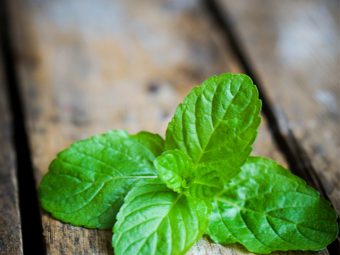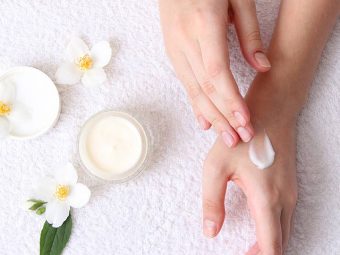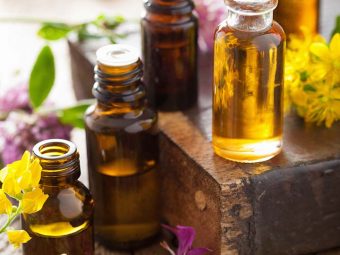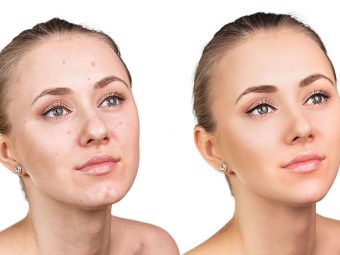How Often Should You Use Face Masks For Healthy Skin?
Understanding how these products work can be crucial in maintaining your skin’s pH balance.
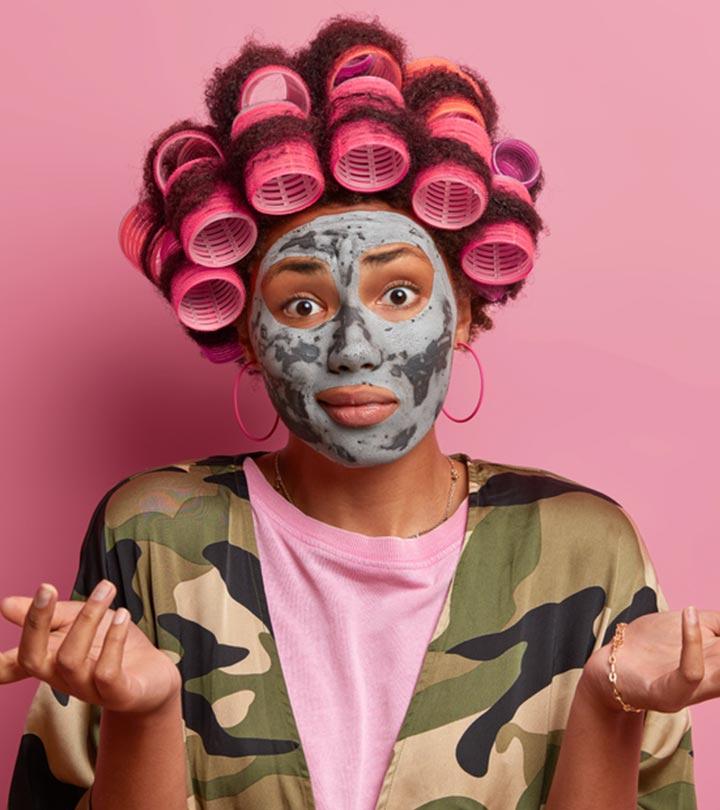
Image: Shutterstock
Many people are confused about how often you should use a face mask. To put it simply, too much of anything is never any good. This also applies to face masks. Face masks are something we all enjoy indulging in to enhance our skin. Whether it is a homemade mask, the trendiest sheet mask, or a peel-off mask, each has its own set of skin advantages. However, using these face masks too regularly might eliminate your skin’s natural oils and disrupt its pH balance. That is why it is crucial to understand how often each type of face mask should be used. That, and much more, has been explored in this article. Scroll down to find out everything you need to know!
 Quick Tip
Quick TipFace masks not only improve the appearance of your skin but also relax you. They often have essential oils like that of mint or rosemary infused that stimulate your senses.
In This Article
How Often Should You Use Face Masks?
How often you should use a face mask depends entirely on the purpose of the mask. Let us explain with the example of the different types of masks you usually use:
1. Korean Sheet Face Mask
These K-beauty sheet masks contain ingredients that can help your skin recover and heal in numerous ways. They are extremely hydrating. However, on the flip side, the benefits of a Korean sheet mask last only until it is wet. Once the sheet has dried, it can pull back all the minerals and vitamins from your face! Some sheet masks may also contain chemicals, and that’s why you should always read the ingredients thoroughly before picking one.
It is very tempting to use Korean sheet masks every day, but we do not recommend it. Some ingredients in the masks might clog your skin pores when used every day. Hence, it is better to use Korean sheet face masks once a week.
2. Activated Charcoal Face Mask
Charcoal peel-off facial masks are incredibly beneficial for clearing the impurities from your skin and removing blackheads and whiteheads. However, these can be extremely harsh on your skin (remember the charcoal mask fail videos).
There is no doubt that activated charcoal is a perfect skin-clearing agent. It can draw bacteria, impurities, and toxins from your skin pores (1). The problem is, along with dirt and impurities, activated charcoal can also strip the natural oils of your skin. So, when you peel that mask off, you are leaving your skin vulnerable to all the pollutants in the air.
Hence, you should use charcoal face masks once a month, not more than that.
3. Clay Or Mud Face Masks
Clay face masks usually suit all skin types and do not irritate the skin. Depending on the type of clay you are using, clay masks can battle acne, dark spots, and signs of photoagingi XA condition in which the skin shows premature signs of aging due to overexposure to the sun. It can lead to cancer in some cases. (2), (3). They can also remove excess oil from your face (4). Also, since clays are rich in natural minerals, your skin absorbs all the goodness of these masks.
However, using them daily can harm your skin. This also depends on the type of clay you are using (like Fuller’s earth, which when used every day may make your skin dry).
Depending on your skin type, you may use clay or mud masks once or twice a week.
4. Gelatin Face Masks
These face masks are great for improving the collagen production of your skin. Gelatin is made from the collagen obtained from animal cartilage, skin, and bones. When this mask dries on your skin, it boosts the collagen levels, improves the elasticity of your skin, and makes it smoother.
However, when you apply gelatin on your face and peel it off, it also takes away a tiny layer of your skin with it. Imagine ripping your skin off every day! Hence, gelatin face masks shouldn’t be used more than twice a month to prevent overexfoliation.
5. Tea Face Masks
Tea face masks are best for improving your skin health. They not only fight the signs of aging but also neutralize the effect of harmful free radicals. They also help prevent acne and pimples (5). Tea masks are loaded with antioxidant benefits, irrespective of the type of tea mask you are using. Despite their skin benefits, tea masks shouldn’t be used more than once a week.
6. Peel-Off Face Masks
Peel-off face masks are great for removing the upper dead skin layer, whiteheads, and blackheads (6). However, frequent exfoliation can hurt your skin. Use a peel-off mask once every two weeks. You can use a gentle face scrub once a week to exfoliate the dead skin layer and reveal smooth, soft, and glowing skin.
Nurin, a beauty and lifestyle blogger, tried using a peel-off mask to help her remove her blackheads. She explains why she prefers the peel-off masks: “I like wearing a charcoal mask because you can see all the blackheads, whiteheads and those tiny hairs being peeled away and it gives you relief that they are coming out (i).”
7. Cream Face Masks
Cream face masks have a rich, creamy texture. They typically contain emollients, oils, and moisturizing agents, which deeply nourish and hydrate the skin. They are especially beneficial for dry or dehydrated skin. They are also infused with vitamins and antioxidants that may help improve skin texture and promote skin radiance. Use these masks once or twice a week to keep your skin soft and supple.
8. Enzyme Facial Masks
Enzyme facial masks utilize natural enzymes to gently exfoliate the skin. These masks break down dead skin cells to promote a smoother, more radiant skin tone. Enzyme masks can also stimulate cell turnover, contributing to a more youthful appearance and improved skin texture. However, use these marks once every few weeks as they may be aggressive on the skin.
9. DIY Face Masks
These are not just fun but also super easy to prepare. DIY face masks may include a variety of ingredients, such as turmeric, yogurt, aloe vera, coconut oil, clay, and rose water. Since these are natural ingredients, you can use DIY face masks three times a week.
However, if you are using citrus fruits (such as lemon juice or grape extracts), be careful. Do not leave the mask for long on your face.
The frequency of applying face masks also depends on your skin type.
- For Acne-Prone Skin
Acne-prone skin tends to be oily. Therefore, controlling the excess sebum production is important. You can use a DIY mask made of Fuller’s earthi XA type of clay with high mineral content used in skin care routines due to its skin-firming and oil-cleansing properties. , turmeric, and rose water. However, using it on a daily basis can dry out your skin and reduce its ability to produce the natural oils. This can make your skin dry and dull. The best way forward is to apply DIY masks every alternate day. Also, use a medicated moisturizer to keep your skin hydrated.
- For Dry Skin
Hydrating masks work best for dry skin. If you have dry skin, you can use a gentle and hydrating face mask almost 3-4 times a week. Hydrating masks usually contain concentrated water, so they will not irritate your skin much.
- For Oily Skin
If you have oily and acne-prone skin, charcoal and clay masks are the best options for you. Acne treatment masks usually contain ingredients like salicylic acid and benzoyl peroxide. These might irritate your skin if used every day. It is best to use them 1-2 times a week. The same goes for charcoal and clay masks.
- For Sensitive Skin
If you have sensitive skin, you should be extra careful with face masks and ingredients. Just like dry skinned people, you should apply hydrating face masks, which can be used daily or three times a week. Avoid any face mask that contains chemicals and artificial fragrance.
- For Mature Skin
Mature skin can lose its elasticity fast, which is why you will need a face mask that hydrates and tones your skin. Ingredients like niacinamide can offer anti-aging benefits (7). Exfoliating masks containing AHAsi XShort for alpha hydroxy acids, water-soluble acids derived from sugary fruits that help in peeling away damaged skin surface. are also beneficial for you (6). two times a week.
Apart from these factors, you need to consider the weather conditions and the season before applying face masks. For instance, your skin turns dry during winters, so a clay mask will not work well. You need a moisturizing and hydrating face mask during winter.
Considering all these factors, face masks should be used periodically to complement your daily skin care routine. When you feel like your skin care routine has hit a plateau or you need something additional for your skin, go for a face mask. But then, for how long should you leave it on your face?
How Long Should You Leave A Face Mask On Your Skin?
Always follow the instructions and guidelines written on the package. Face masks often contain active ingredients that should not be left on your skin for more than 5-10 minutes. If you leave it on for a longer time, the same face mask can give negative results. However, some face masks are pretty flexible in terms of time.
For instance, overnight face masks can be left on for the entire night. These masks nourish and heal your skin while you are asleep. Some even boost collagen development and improve skin elasticity.
In case you are using DIY masks with natural ingredients, you can keep them as long as you want or until they dry. However, be careful if you are using citrus ingredients. as they can irritate your skin. Do not leave them on for more than 20 minutes. If you have sensitive skin, avoid using a DIY mask with citrus ingredients.
Sure, using face masks too frequently or keeping them on for too long is a big no-no. But, they do have many benefits. Here’s a quick reminder for why you should include face masks in your beauty regimen.
Skin Benefits Of Face Masks
What your face mask does to your skin depends on the type of mask or the formula you are using.
When it comes to face masks, there are infinite varieties to choose from. Not all have the same formulation and ingredients. The way a collagen-boosting mask works on your face is totally different from the way a mud mask would work. Irrespective of the type of mask you choose or the formula you pick, your face mask can do the following things to your skin (6):
- Improves skin texture
- Refines skin pores
- Makes your skin soft and smooth by removing dead cells
- Helps in skin hydration
- Removes excess dirt, oil, and impurities
- Makes your skin radiant
- Reduces the appearance of fine lines, dark spots, and wrinkles
- Unclogs the skin pores
- Improves the elasticity of your skin
- Reduces acne
- Reduces eye puffiness
 Did You Know?
Did You Know?Infographic: How Often Should You Use The Different Types Of Face Masks?
Be it dullness, acne, blemishes, or any skin concern, face masks are available for all. However, to get the maximum from them, it is crucial to understand how often you should use a face mask. After all, too much of it can disrupt the pH balance of your skin and worsen its condition. Check out the infographic below to learn how frequently you should use the different types of face masks.

Illustration: StyleCraze Design Team
Save the high-quality PDF version on your device now.
Download Infographic
Regular use of face masks may disrupt your skin’s pH balance and strip the natural oils. So, it is important to understand how often you should use a face mask. Different types of face masks act differently. So, you must be aware of the purpose of these masks and how often you should use them to avail the benefits. Moreover, the frequency of the use also depends upon your skin type. Create a comprehensive beauty regimen that includes facial cleansing, pore cleansing, facial treatments, and spa treatments for some much-needed self-care. When combined with the use of high-quality, natural skincare beauty products, these beauty tips can help you unlock the beauty secrets to healthy skin.
Frequently Asked Questions
How often should you use a face mask?
Danielle Gronich, a clinical esthetician and co-founder & CEO of CLEARSTEM Skincare, says, “It depends on what the mask does. Is it exfoliating (like with AHAs), is it moisturizing, or is it a clay mask? The purpose and ingredients of the mask will determine when and how often to use it. A clay mask can be tolerated well by most people, about twice a week. An exfoliating mask should be used about once a week. A moisture mask could be used every night, as it doesn’t affect the barrier.”
Are face masks better at night or day?
Gronich says, “Usually this is a nighttime thing, as most people are pressed for time in the morning. Also, any exfoliating mask is generally safest to use at night to prevent unwanted sun sensitivity.”
Is it okay to use a face mask every day?
Yes, it is, as long as it is either calming or hydrating. Gronich adds, “A drying or exfoliating mask should only be used 1-2 times per week.”
Do you wash your face after using a mask?
It depends on the type of face mask you apply. For example, you may need to wash off clay masks, but you wouldn’t need a rinse after using a sheet mask.
Should I use a face mask before or after a shower?
If you have dry skin and are using a hydrating and nourishing mask, it is best to apply it before the shower and wash it off in the shower itself. However, if you have oily or combination skin and are using cleansing masks like clay or charcoal-based masks, use them after showering.
Should I apply toner after using a mask?
Always apply a toner after using a cleansing or wash-off mask. However, if you are using sheet masks, apply the toner before using them. This may hydrate your skin and protect it from external irritants.
Key Takeaways
- Using face masks daily can take away the essential nutrients from your skin, leaving it clogged and dry.
- Masks such as sheet masks, tea masks, or DIY masks should be applied once a week to boost your skin health.
- They should not be left on your skin for more than 10 to 15 minutes.
- They can help remove excess oil and dirt and hydrate your skin.
Find out how often you should use a charcoal mask to get the best results for your skin! Watch this video to learn how to use it correctly and safely.
Personal Experience: Source
i. I’m a sucker for face masks
https://medium.com/@nurinqistina91/im-a-sucker-for-face-masks-276b8fb22914
Sources
Articles on StyleCraze are backed by verified information from peer-reviewed and academic research papers, reputed organizations, research institutions, and medical associations to ensure accuracy and relevance. Read our editorial policy to learn more.
- Charcoal: An ancient material with a new face
https://pubmed.ncbi.nlm.nih.gov/32513407/ - Clay jojoba oil facial mask for lesioned skin and mild acne–results of a prospective, observational pilot study
https://pubmed.ncbi.nlm.nih.gov/22585103/ - Treatment Modalities for Acne
https://www.ncbi.nlm.nih.gov/labs/pmc/articles/PMC6273829/ - Evaluation of the medicinal use of clay minerals as antibacterial agents
https://www.ncbi.nlm.nih.gov/labs/pmc/articles/PMC2904249/ - Dried serum powder and sheet mask for anti-aging purposes
https://www.researchgate.net/publication/352850814_Dried_serum_powder_and_sheet_mask_for_anti-aging_purposes - Skin care and rejuvenation by cosmeceutical facial mask
https://www.researchgate.net/publication/327167819_Skin_care_and_rejuvenation_by_cosmeceutical_facial_mask - Niacinamide: A B vitamin that improves aging facial skin appearance
https://pubmed.ncbi.nlm.nih.gov/16029679/
















